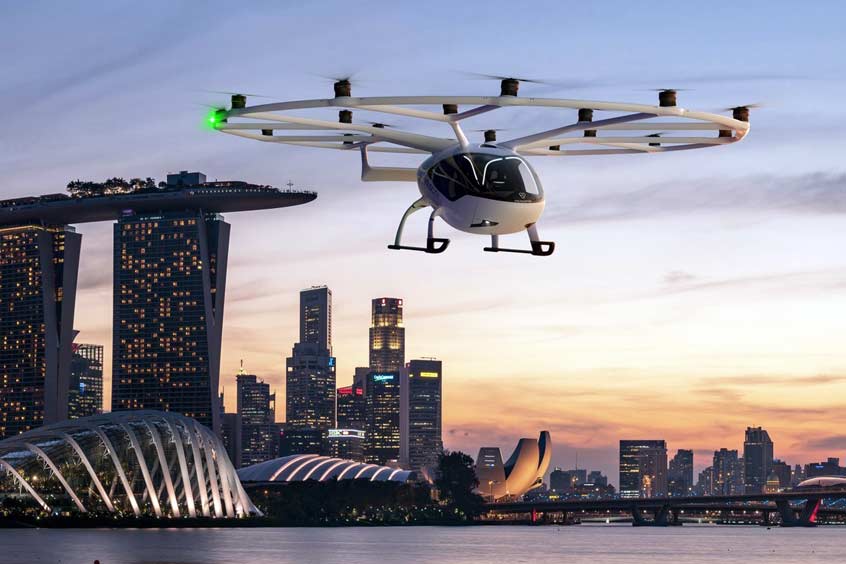Why visit ACE ’25?

Volocopter, a German urban air mobility (UAM) company, plans to launch air taxi services in Singapore after two years of close collaboration with the city.
Working together with the Economic Development Board of Singapore (EDB) and the Civil Aviation Authority of Singapore (CAAS), Volocopter intends to make air taxi services a reality in the southeast Asian city-state within the next three years. This puts Singapore in pole position to launch UAM in Asia. In preparation for the launch, Volocopter has founded Volocopter Asia Holding and hired Hon Lung Chu as its head of Asia Pacific in Singapore.
In October 2019, Volocopter completed an air taxi demonstration flight in the heart of Singapore over the Marina Bay area, giving observers the unique opportunity to have a sense of what urban air mobility will look like. Leading up to this flight, the company opened a Singapore office in 2019, conducted extensive flight tests and worked closely with several key stakeholders, such as the Ministry of Transport (MOT) and CAAS, to receive the necessary permits to fly.
Before launching the services in Singapore, Volocopter will obtain the necessary regulatory approvals, including those from CAAS and EASA. Volocopter's regulatory approvals will be facilitated by CAAS and EASA's Working Arrangement on Airworthiness Certification, which allows for validation of type certification to be done concurrently and in close coordination. To achieve this, Volocopter will, together with stakeholders, also be conducting comprehensive tests, flight trials, evaluations and certification before approval to commence commercial air taxi operations can be granted.
“Singapore is renowned for its leading role in adapting and living new technologies. Our successful cooperation with EDB, MOT and CAAS on our previous flight has shown that there is no better place in Asia to launch our electric air taxi services than in Singapore,” says Volocopter CEO Florian Reuter. “The city's research institutes conducting R&D play an integral part in this. Topics like route validation for autonomous operations, material science and research regarding battery technology are very important for our long-term business success.”
The first route in the Lion City is expected to be a touristic route over the southern waters, offering views of the Marina Bay skyline. This could provide Singapore with a new attraction to enhance its tourism industry in the context of the COVID-19 pandemic. Follow-on connections may include cross-border flights, which may enhance regional connectivity and offer a significantly improved travel experience to Singapore's closest economic centres.
Leading up to the launch of commercial operations, Volocopter will build up a team of 50 pilots, engineers, operation specialists and business managers in the next three years. The company is expected to hire over 200 full-time employees in Singapore to manage a network of Singapore routes by 2026. It has also initiated research and development projects with local institutions, starting with Fraunhofer Singapore at the Nanyang Technological University.
“Urban air mobility is an emerging area within the broader mobility sector, which we have identified as a growth industry for Singapore,” explains Tan Kong Hwee, executive VP of EDB. “Singapore is an important regional testbed for autonomous cars, electric vehicles, and urban air mobility, including the successful test flight by Volocopter in 2019. We are glad that Volocopter has chosen Singapore to anchor its commercial and R&D activities. This will help build new capabilities for our mobility ecosystem and create many exciting opportunities for Singapore.”
“In this new area of urban air mobility, we look forward to continue working with Volocopter. This gives us the opportunity to co-create regulations and technologies with the industry, facilitating innovation to enable a future mode of transportation for Singapore,” adds Tan Kah Han, senior director of unmanned systems group of CAAS.
Volocopter air taxis are emission-free, electrically powered aircraft that take-off and land vertically. They are designed as an addition to urban mobility and will fly up to two passengers directly and quietly to their destination. As such, they will offer a whole new dimension to the quality of life in cities.